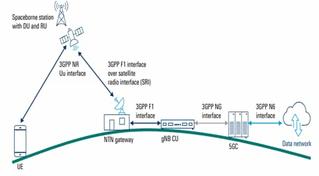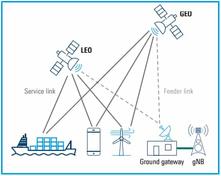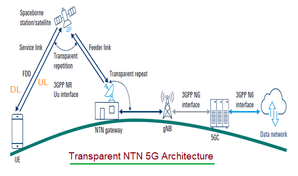5G NTN UE timers : T3510, T3517, T3580, T3581, T3582
Advertisement
There are timers defined in specific NAS (Non-Access Stratum) in 5G NTN specifications. These are UE side timers which run on the user’s device. Their primary purpose is to prevent UE from waiting indefinitely for a response from the core network. If one of these timers expires, the UE considers the corresponding procedure to have failed.
The fundamental reason all these timers need to be extended for 5G NTN is the long Round-Trip Time (RTT). Because messages between the UE and the core network have to travel to space and back, the standard timer values would expire long before a response could be received, leading to constant connection failures. Here is a specific breakdown of each timer and its function in the 5G NTN system.
Mobility Management Timers
T3510 and T3517 are mobility management timers which are related to UE’s registration status and its state (Idle or Connected).
T3510 (Registration Request Timer)
- Function : When a UE wants to register with the 5G network (e.g., after turning on), it sends a REGISTRATION REQUEST message and starts the T3510 timer.
- Role in 5G NTN : This timer sets the maximum time the UE will wait to confirm that its mobility management context has been successfully established with the network’s Access and Mobility Management Function (AMF). Due to the long RTT, the time it takes for the request to reach the AMF and for the AMF’s response to get back to the UE is significantly longer.
- Recommended Value : It is better to set this timer by a value equivalent to 5 times the Worst Case Round Trip Time (WCRTT) to prevent a registration failure.
T3517 (Service Request Timer)
- Function : When a UE in IDLE mode needs to send data or receives a page from the network, it sends a SERVICE REQUEST message to move into CONNECTED mode and starts the T3517 timer.
- Role in 5G NTN : This timer manages the transition from idle to connected state. It must be long enough to account for the entire request-and-response cycle over the satellite link. An extension is crucial to “avoid a connection interruption due to pending service accept responses resulting from a large RTT.”
- Recommended Value : Extend this timer value by 3 x WCRTT.
Session management Timers
T3580, T3581 and T3582 timers are related to PDU sessions, which provide the actual data connectivity (e.g. internet connection).
T3580 (PDU Session Establishment Request Timer)
- Function : When a UE wants to establish a new data connection (e.g., to access the internet), it sends a PDU SESSION ESTABLISHMENT REQUEST and starts the T3580 timer.
- Role in 5G NTN : This timer sets the maximum waiting time for the data session to be successfully created. The setup involves signaling between the UE and the Session Management Function (SMF) in the core network, all of which is delayed by the NTN link.
- Recommended value : 4 x WCRTT
T3581 (PDU Session Modification Timer)
- Function : If the UE needs to modify an existing PDU session (e.g., to change its QoS parameters), it sends a PDU SESSION MODIFICATION REQUEST and starts the T3581 timer.
- Role in 5G NTN : This timer ensures the modification procedure completes within a reasonable time. Like other procedures, it is extended to accommodate the RTT.
- Recommended value : extend it to value equals 1 x WCRTT
T3582 (PDU Session Release Timer)
- Function : When the UE initiates the release of a PDU session, it sends a PDU SESSION RELEASE REQUEST and starts the T3582 timer to wait for the network’s confirmation.
- Role in 5G NTN : This timer manages the clean teardown of a data session. It is also extended to account for the delay in the release confirmation message from the network.
- Recommended value : extend it to value equals 1 x WCRTT
Advertisement
 RF
RF

